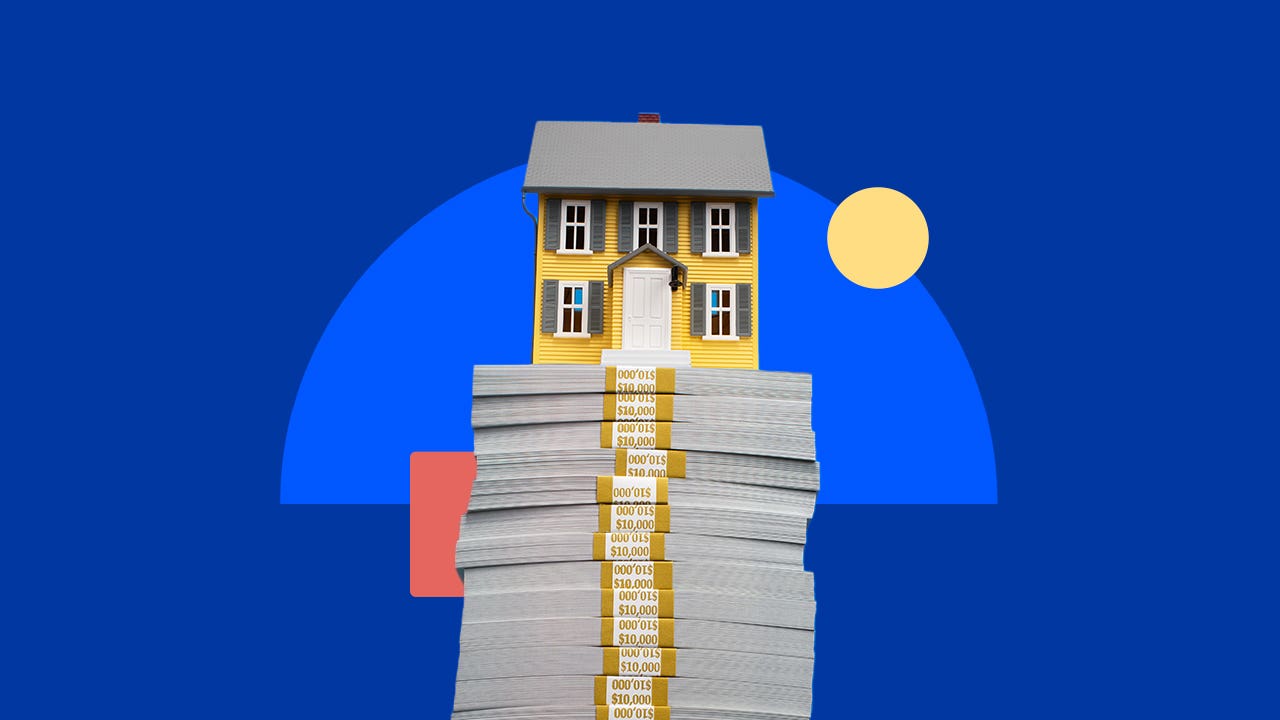Mortgage rates retreat, still above 7%

Current mortgage rates
| Loan type | Current | 4 weeks ago | One year ago | 52-week average | 52-week low |
|---|---|---|---|---|---|
| 30-year | 7.06% | 6.94% | 6.93% | 6.91% | 6.20% |
| 15-year | 6.29% | 6.16% | 6.24% | 6.21% | 5.40% |
| 30-year jumbo | 7.10% | 6.94% | 6.92% | 6.95% | 6.36% |
The 30-year fixed mortgages in this week’s survey had an average total of 0.26 discount and origination points. Discount points are a way for you to reduce your mortgage rate, while origination points are fees lenders charge to create, review and process your loan.
Monthly mortgage payment at today’s rates
The national median family income for 2024 was $97,800, according to the U.S. Department of Housing and Urban Development, and the median price of an existing home sold in November 2024 was $406,100, according to the National Association of Realtors. Based on a 20 percent down payment and a 7.06 percent mortgage rate, the monthly payment of $2,175 amounts to 27 percent of the typical family’s monthly income.
Will mortgage rates fall in 2025?
Since September, the Federal Reserve has cut its benchmark interest rate a full percentage point — and yet mortgage rates are up nearly a full percentage point. Those divergent paths underscore this reality: Fixed mortgage rates are not set directly by the Fed, but by investor appetite, particularly for 10-year Treasury bonds. The 30-year fixed-rate mortgage rate moves with the yield on 10-year Treasury bonds.
“The 30-year mortgage rates are tied to the 10-year Treasury bonds, and long-term Treasury bonds have been increasing. Therefore, residential loan rates haven’t been falling as much as people have expected,” says Calixto Garcia-Velez, president and CEO at BanescoUSA in Miami.
When there’s uncertainty in the market, investors buy Treasury bonds, which in turn drives yields — and, often, mortgage rates — downward. However, Treasury yields have been rising as inflation remains stubbornly persistent. On Jan. 15, the Labor Department reported that inflation had heated up to 2.9 percent in December, up from 2.7 percent in November.
Meanwhile, housing economists and mortgage players have seized on a new narrative — that four more years of President-elect Donald Trump will mean ever-growing deficits, and that those deficits will put upward pressure on 10-year Treasury yields and, in turn, mortgage rates.
Then there’s the Fed. Lenders and mortgage investors had been anticipating the central bank’s rate cuts in September, November and December, and economic indicators such as hiring have shown signs of strength.
“Only six months ago, many predicted that interest rates would be reduced slowly through 2025 and mortgage rates would reach mid to high 5 percent range,” says Selma Hepp, chief economist at real estate data firm CoreLogic. “But that outlook has changed tremendously.”
-
The Bankrate.com national survey of large lenders is conducted weekly. To conduct the National Average survey, Bankrate obtains rate information from the 10 largest banks and thrifts in 10 large U.S. markets. In the Bankrate.com national survey, our Market Analysis team gathers rates and/or yields on banking deposits, loans and mortgages. We’ve conducted this survey in the same manner for more than 30 years, and because it’s consistently done the way it is, it gives an accurate national apples-to-apples comparison. Our rates differ from other national surveys, in particular Freddie Mac’s weekly published rates. Each week Freddie Mac surveys lenders on the rates and points based on first-lien prime conventional conforming home purchase mortgages with a loan-to-value of 80 percent. “Lenders surveyed each week are a mix of lender types — thrifts, credit unions, commercial banks and mortgage lending companies — is roughly proportional to the level of mortgage business that each type commands nationwide,” according to Freddie Mac.
You may also like

Best FHA mortgage lenders in 2024





